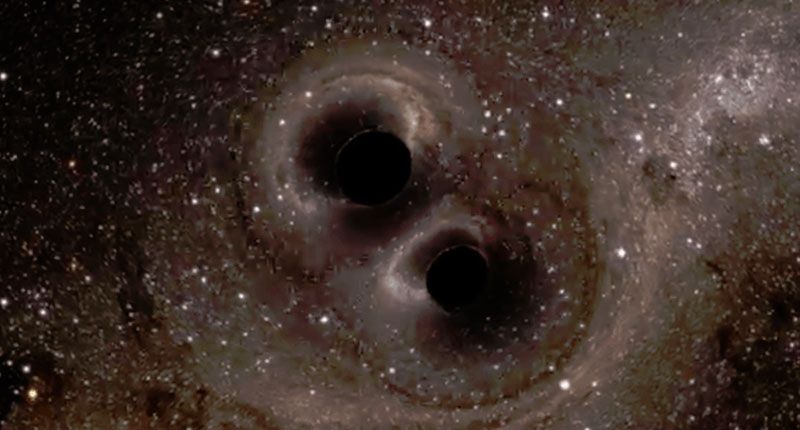One hundred years ago Albert Einstein in his general theory of relativity predicted the existence of a dark side to the cosmos. He thought there were invisible “gravitational waves”, ripples in space-time produced by some of the most violent events in the cosmos – exploding stars, colliding black holes, perhaps even the Big Bang itself. For decades, astronomers have gathered strong corroborative evidence of the existence of these waves, but they have never been detected directly – until now. They were the last part of the general theory still to be verified.
How we made the discovery
The discovery dates back to last September, when two giant measuring devices in different parts of the US called LIGO (Laser Interferometer Gravitational-Wave Observatory) caught a passing gravitational wave from the collision of two massive black holes in a faraway galaxy. LIGO is what we call an interferometer, consisting of two 4km “arms” set at right angles to each other, protected by concrete tubes, and a laser beam which is shone and reflected back and forth by mirrors at each end.
The changes in the length of the arms are actually tiny – roughly one million millionth the width of a human hair. This is because the signal from a gravitational wave from far out in the cosmos is mind-bogglingly small by the time it reaches us. As if detecting this were not difficult enough, all manner of local disturbances on Earth make it worse, from the ground shaking to power-grid fluctuations; and instrumental “noises” that could mimic or indeed completely swamp a real signal from the cosmos.
To achieve the astounding sensitivity required, almost every aspect of the LIGO detectors' design has been upgraded over the past few years. We at the University of Glasgow led a consortium of UK institutions that played a key role – developing, constructing and installing the sensitive mirror suspensions at the heart of the LIGO detectors that were crucial to this first detection. The technology was based on our work on the earlier UK/German GEO600 detector. This turned LIGO into Advanced LIGO, arguably the most sensitive scientific instrument ever, to give us our first direct glimpse of the dark universe.
A long time ago …
What a glimpse it was. The two black holes that collided were respectively about 29 times and 36 times the mass of our sun (shown in the computer visualisation below). It is incidentally the first direct evidence that black holes exist, can exist in a pair, and can collide and merge. Comparing our data with Einstein’s predictions allowed us to test whether general relativity correctly describes such a collision – they passed with flying colours.
The black-hole collision
Of course our discovery isn’t just about checking if Einstein was right. Detecting gravitational waves will help us to probe the most extreme corners of the cosmos – the event horizon of a black hole, the innermost heart of a supernova, the internal structure of a neutron star: regions that are completely inaccessible to electromagnetic telescopes.
By Martin Hendry, Professor of Gravitational Astrophysics and Cosmology, University of Glasgow
This article was originally published on The Conversation. Read the original article.
Leave a Comment
Related Post
